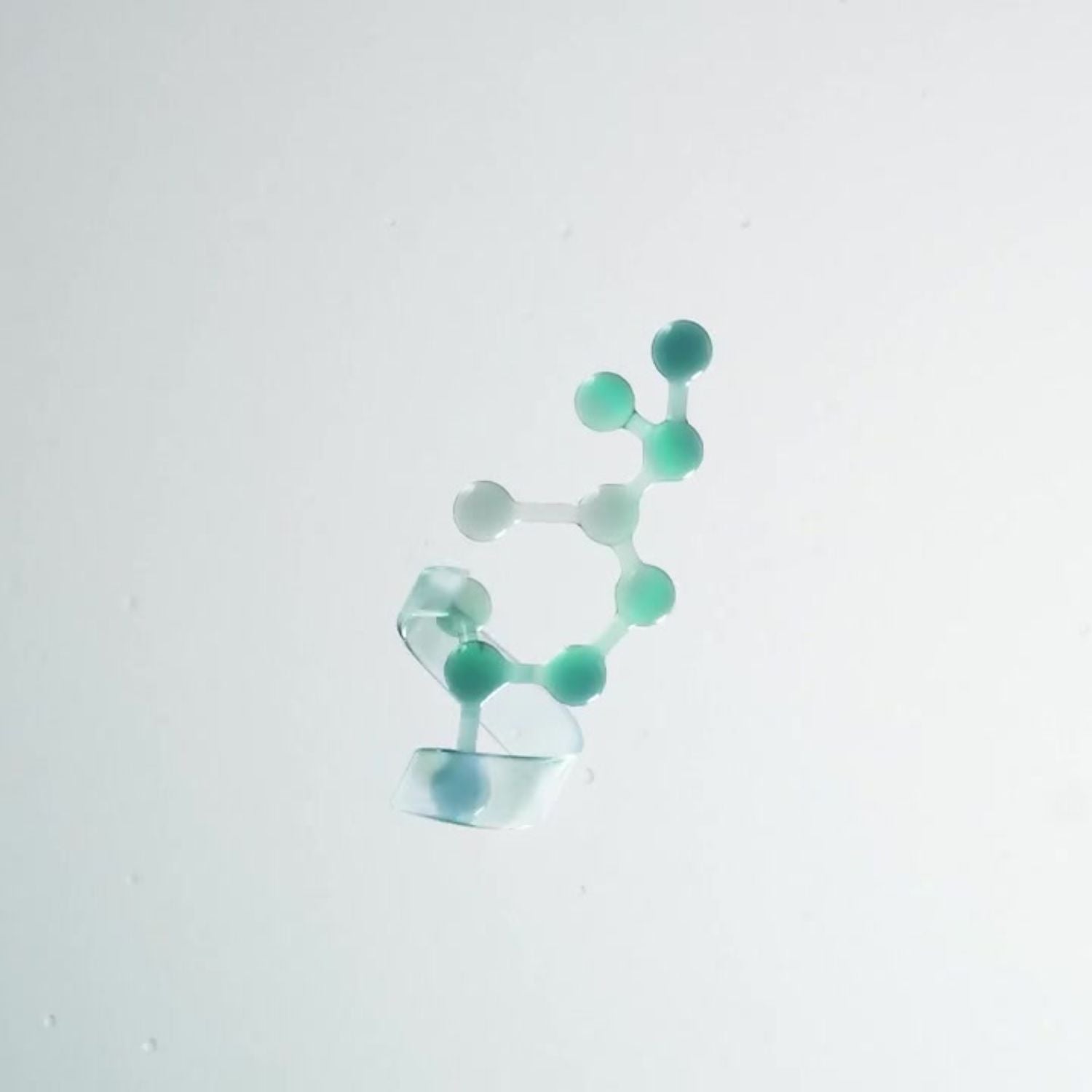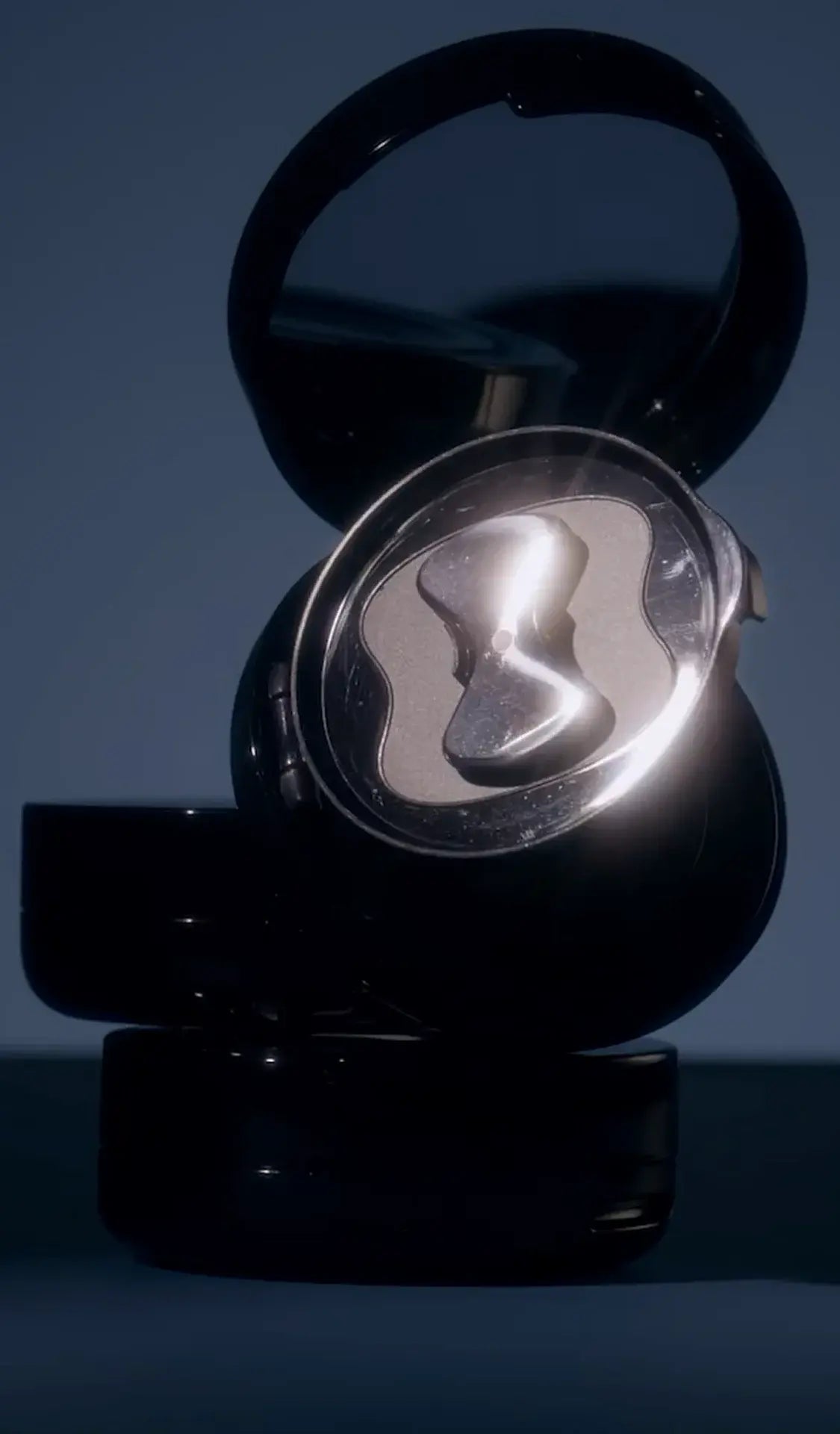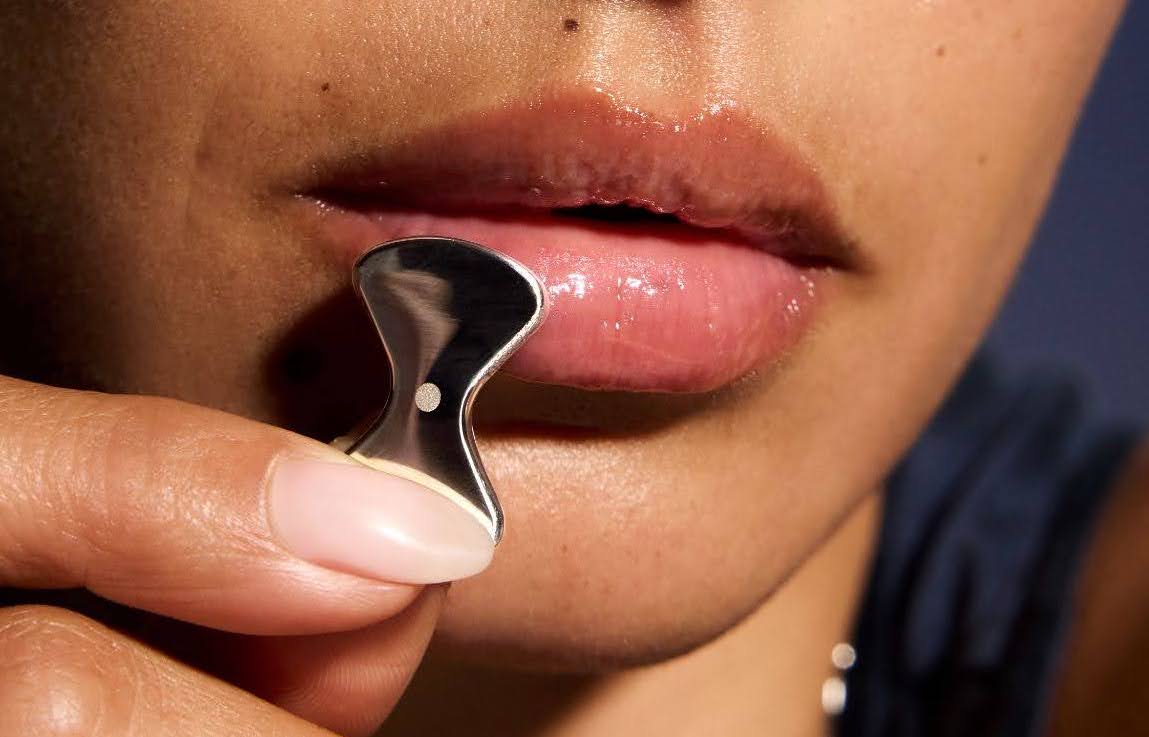There’s nothing more frustrating than a lip balm that goes on smoothly but leaves your lips dry, tight, or peeling. Low-quality lip balms often contain ingredients that create a fleeting sense of hydration but ultimately disrupt the lip’s barrier, leaving this vulnerable skin even more unprotected. Understanding which lip balm ingredients are safe and science-backed and which to avoid can make a big difference in achieving softer, hydrated, and healthier lips.
Why Do Lips Get Dry?
Unlike the rest of your skin, which has a robust layer of skin cells coated in protective oils that lock in moisture, the lips are relatively thin and don't contain any oil-producing glands.[1] This makes it much easier for moisture to escape, which can cause them to dry out quickly. When this dryness persists, it causes flakiness and inflammation, or chapped lips.
Why Do Some Lip Balms Make Chapped Lips Worse?
Many conventional lip balms contain ingredients that provide temporary relief but can actually worsen the condition of the lips. One of the most common reasons for this is that they rely on thick occlusive agents that trap moisture without delivering hydration. Once the balm has worn off, your lips may not be properly hydrated, and the dryness quickly returns.
Others contain potentially harmful and irritating chemicals that can have a more pronounced effect on the thin lip skin. When applied to already damaged or chapped lip skin, balms containing these ingredients can further dry out or irritate the lips.[2]
What Are Some Common Lip Balm Ingredients To Avoid?
Here are some ingredients best left out of your lip care routine:
Chemical Sunscreens
Lip SPF’s are becoming an increasingly popular option to protect the lips from dryness and sun damage. This increase in popularity is a positive trend, since lips are extra vulnerable to UV damage due to their thin skin barrier and lower concentration of UV-protecting melanin.[3]
While UV protection is essential, lip balms may contain chemical sunscreen agents and ingredients that can be irritating or even harmful when ingested orally. For lip products where you may ingest up to 87 mg a day (thats 10 tubes per year), this is especially important.[4] Some ingredients, such as oxybenzone, octinoxate, octisalate, octocrylene, avobenzone, and padimate O, can cause irritation or other health concerns, including potential hormone disruption.[5] Mineral-based SPF protection is an effective alternative, providing the same level of sun protection with less potential for harm.[6]
Potentially Harmful Ingredients
Artificial fragrances, dyes, and preservatives, such as parabens, are commonly added to lip balms to enhance scent, improve taste or smell, and extend shelf life. However, these additives can be easily ingested or penetrate the lip’s thin barrier, especially if the skin is cracked. Unfortunately, these substances can be harsh on delicate lip skin. They can result in irritation, increased dryness, and, in cases like parabens and other hormone disruptors, have been linked to increased rates of breast cancer and other health concerns.[7] Choosing lip balms free from these harmful additives can reduce the risk of irritation and ensure a gentler product.
Drying Agents
Cooling or tingling ingredients such as menthol, camphor, and alcohol may offer a fleeting sensation of relief, but they often exacerbate dryness over time. These ingredients can strip away moisture, leaving lips dry and vulnerable.[8] The best way to give your lips relief is to look for lip balms with naturally soothing agents that support repair without irritation.
What Ingredients Should You Look For in a Lip Balm?
A well-formulated lip balm should do more than coat the lips—it should nourish, protect, and actively restore the skin barrier. Here are the top categories, with some ingredient recommendations, to seek out:
Antioxidants
As one of the most exposed and delicate areas of the skin, the lips are constantly vulnerable to oxidative stress that can contribute to premature skin aging and inflammation in lip tissue.[9] Antioxidants often play a dual role in skin health by combating this oxidative stress while supporting repair function. Here are some of our favorites:
- Watermelon Fruit Extract: Delivers antioxidants and hydration to support barrier integrity.[10]
- Tocopherol (Vitamin E): Nourishes, softens, and shields delicate lip skin.[11]
- Tetrahexyldecyl Ascorbate: Brightens, firms, and evens lip tone with a potent form of vitamin C.[12]
- Haematococcus Pluvialis Extract: Powerful algae-based antioxidant that smooths and protects.[13]
- Olive Fruit Oil: Deeply moisturizing and calming for dry, sensitive lips.[14]
- Centella Asiatica Extract: An antioxidant-rich botanical extract that calms, repairs, and plumps lip skin.[15]
Found in either OS-01 LIP or OS-01 LIP SPF, these powerful antioxidants are perfect for delicate lip skin.
Skin-Identical Ingredients
Skin-identical ingredients are biocompatible compounds that replicate the structure and function of those already present in the skin. Because they provide the lips exactly what they’re missing —humectants, protective oils, and essential lipids—these ingredients work with your skin, not against it. Here are some of the skin-identical ingredients found in OS-01 LIP Mask:
- Squalane: A non-comedogenic emollient that mimics skin’s natural sebum to restore moisture.[16]
- Glycerin: This humectant acts like a magnet for moisture, drawing water into the skin, keeping lips hydrated and supple.[17]
- Sodium Hyaluronate: A salt form of hyaluronic acid, sodium hyaluronate penetrates the skin to draw moisture in and help the skin retain it.[18]
- Ceramide NP: This oil is naturally found in the skin, helping to restore the lips' natural protective barrier.[19]
- Sodium PCA: A component of the skin’s endogenous moisturizing factor (NMF), sodium PCA is crucial for maintaining the skin's hydration balance.[19]
Soothing Ingredients
When your lip's skin barrier is damaged, it’s best to soothe the inflammation to help the lip repair itself. That’s where soothing and reparative ingredients come in. These compounds help calm inflammation, reduce irritation, and support the skin’s natural healing processes. Here are four well-studied ingredients in OS-01 LIP Mask to help your lips recover from daily stressors:
- Panthenol (Provitamin B5): Helps heal, hydrate, and strengthen the lip's skin barrier.[20]
- Bisabolol: A well-known anti-irritant with proven efficacy in calming irritation and enhancing the penetration of other actives.[21,22]
- Phaeodactylum Tricornutum Extract: This algae-derived extract delivers omegas and carotenoids that revitalise stressed skin.[23]
- Allantoin: Promotes gentle exfoliation and regeneration of damaged skin for a smoother texture.[24]
Mineral UV Filters (zinc oxide)
Our mineral UV filter of choice, non-nano zinc oxide, offers stable and non-irritating broad-spectrum UV protection. It is particularly well-suited for lip care because it does not penetrate the skin or disrupt hormone pathways, making it safer for long-term use, even given the risk of ingestion. In OS-01 LIP SPF, we use only 100% non-nano zinc oxide to provide 15+ SPF protection that goes on smoothly and blends seamlessly once absorbed.[25,26]
Peptides
Peptides, short chains of amino acids, are well-suited for use on the lips because they can easily penetrate the thin lip skin barrier and instruct the skin cells to perform specific tasks, such as producing collagen. Here’s how the two peptides found in OS-01 LIP Mask help boost skin function.
- Palmitoyl Hexapeptide-12: This signal peptide mimics how your body sends signals to kickstart collagen production and firm, smooth, and strengthen aging lip skin.[27]
- OS-01: Our patented peptide, OS-01, is scientifically validated to reduce senescence in skin cells. By reducing the number of these cells, OS-01 is perfect for promoting natural repair from the daily stressors your skin experiences.[28] Additionally, OS-01 promotes the synthesis of collagen and hyaluronic acid, which helps keep lip skin firm, flexible, and plump.[28]
Key Takeaways:
- Many lip balms provide short-term relief but worsen dryness by disrupting the lip’s natural barrier.
- Ingredients like parabens, synthetic fragrances, and chemical sunscreens can disrupt hormones or irritate the lips.
- A good lip balm doesn’t just sit on top—it hydrates, repairs, and reinforces the barrier over time.
- From UV-filtering zinc oxide to collagen-promoting peptides, the best lip balm formulas blend science-backed ingredients that hydrate, defend, and help rebuild the lips’ delicate barrier.
References
- https://www.ncbi.nlm.nih.gov/pmc/articles/PMC2923945/
- https://www.ncbi.nlm.nih.gov/pmc/articles/PMC8251770/
- https://pmc.ncbi.nlm.nih.gov/articles/PMC8251770/
- https://pmc.ncbi.nlm.nih.gov/articles/PMC3672908/
- https://www.ncbi.nlm.nih.gov/pmc/articles/PMC5615097/
- https://pubmed.ncbi.nlm.nih.gov/10477339/
- https://www.ncbi.nlm.nih.gov/pmc/articles/PMC10205179/
- https://www.ncbi.nlm.nih.gov/pmc/articles/PMC5625597/
- https://pmc.ncbi.nlm.nih.gov/articles/PMC5514576/
- https://www.sciencedirect.com/science/article/abs/pii/S0889157510002267
- http://pmc.ncbi.nlm.nih.gov/articles/PMC4976416/
- https://pmc.ncbi.nlm.nih.gov/articles/PMC8395926/
- https://pmc.ncbi.nlm.nih.gov/articles/PMC7424503/
- https://pmc.ncbi.nlm.nih.gov/articles/PMC7914505/
- https://pmc.ncbi.nlm.nih.gov/articles/PMC3834700/
- https://pmc.ncbi.nlm.nih.gov/articles/PMC6253993/
- https://pmc.ncbi.nlm.nih.gov/articles/PMC5560567/
- https://pmc.ncbi.nlm.nih.gov/articles/PMC12026949/
- https://pmc.ncbi.nlm.nih.gov/articles/PMC6197824/
- https://www.ncbi.nlm.nih.gov/books/NBK563233/
- https://pmc.ncbi.nlm.nih.gov/articles/PMC9002489/
- https://www.sciencedirect.com/science/article/abs/pii/037851739190167M
- https://www.mdpi.com/2079-9284/8/3/76
- https://pmc.ncbi.nlm.nih.gov/articles/PMC10144563/
- https://pubmed.ncbi.nlm.nih.gov/28509652/
- https://pmc.ncbi.nlm.nih.gov/articles/PMC8618668/
- https://pmc.ncbi.nlm.nih.gov/articles/PMC11762834/
- Zonari, A., et al. npj Aging, 2023



